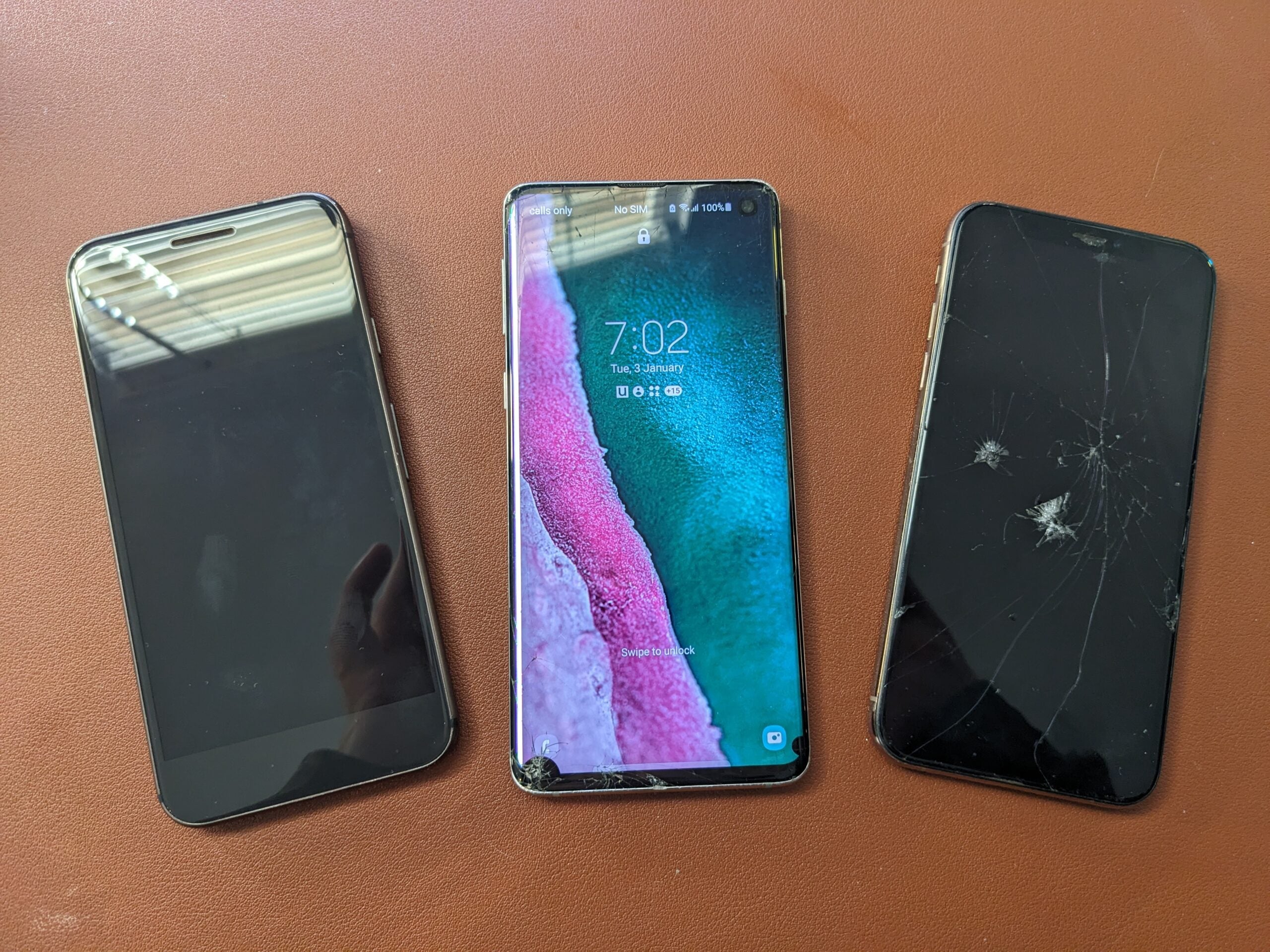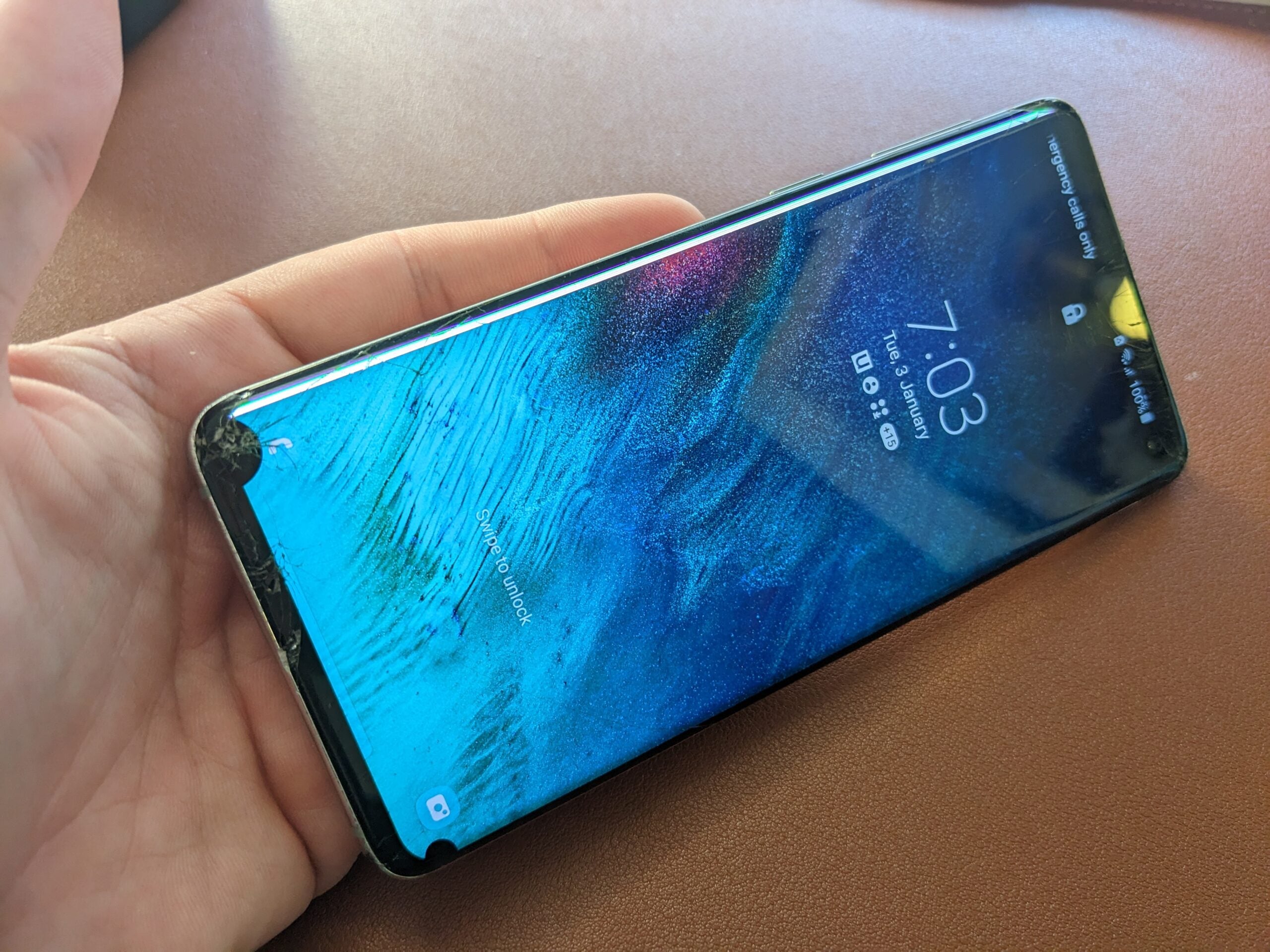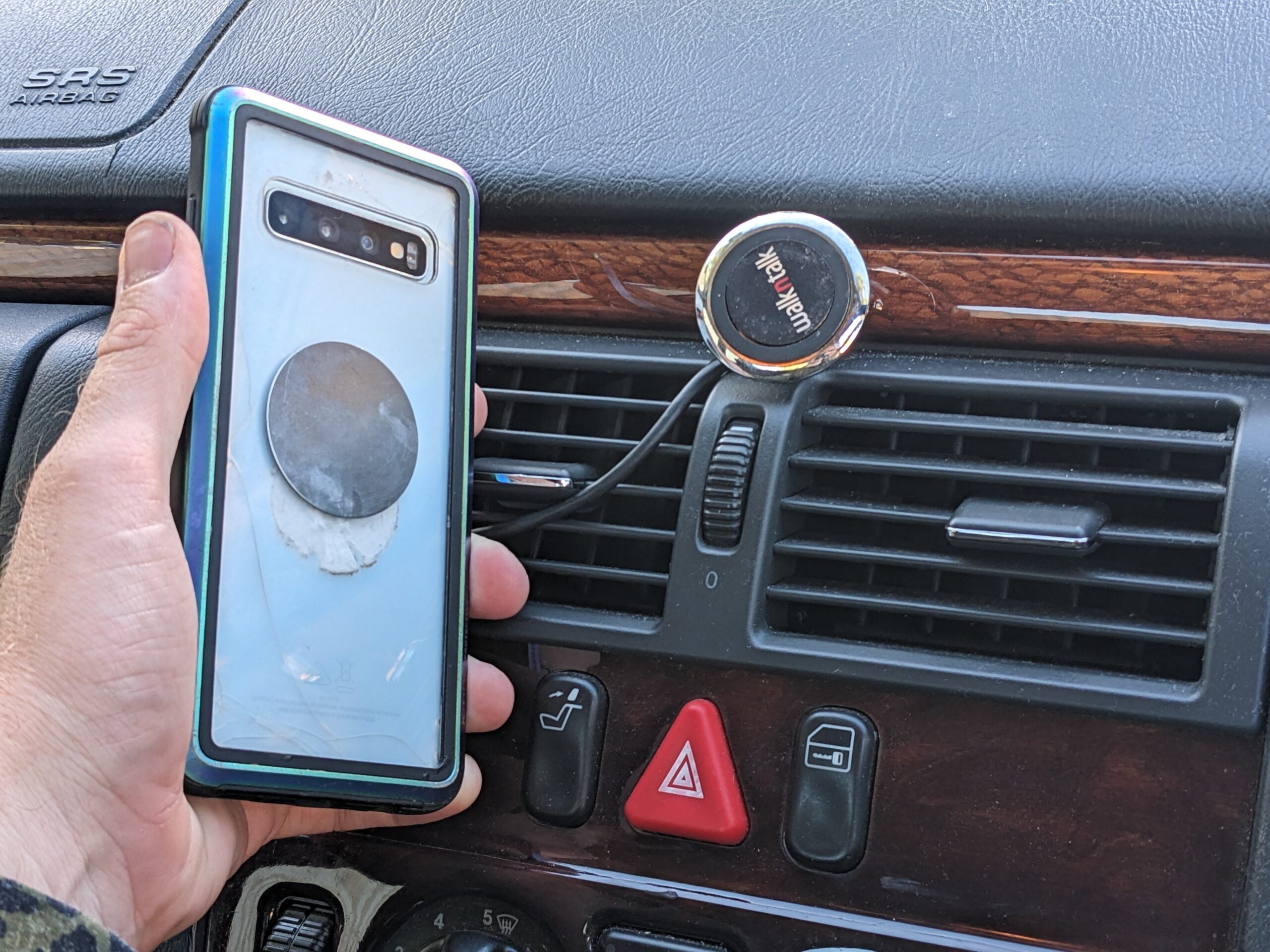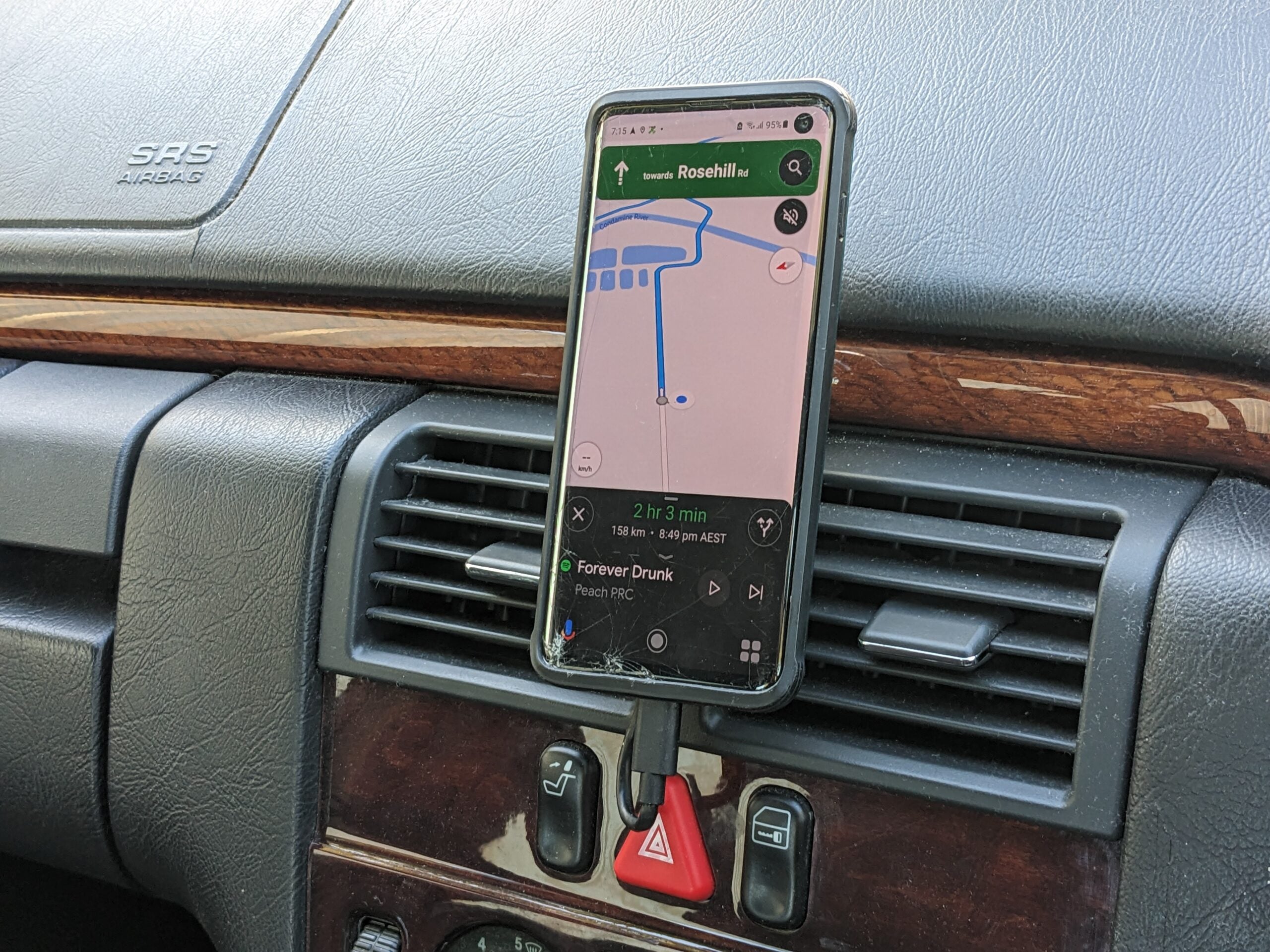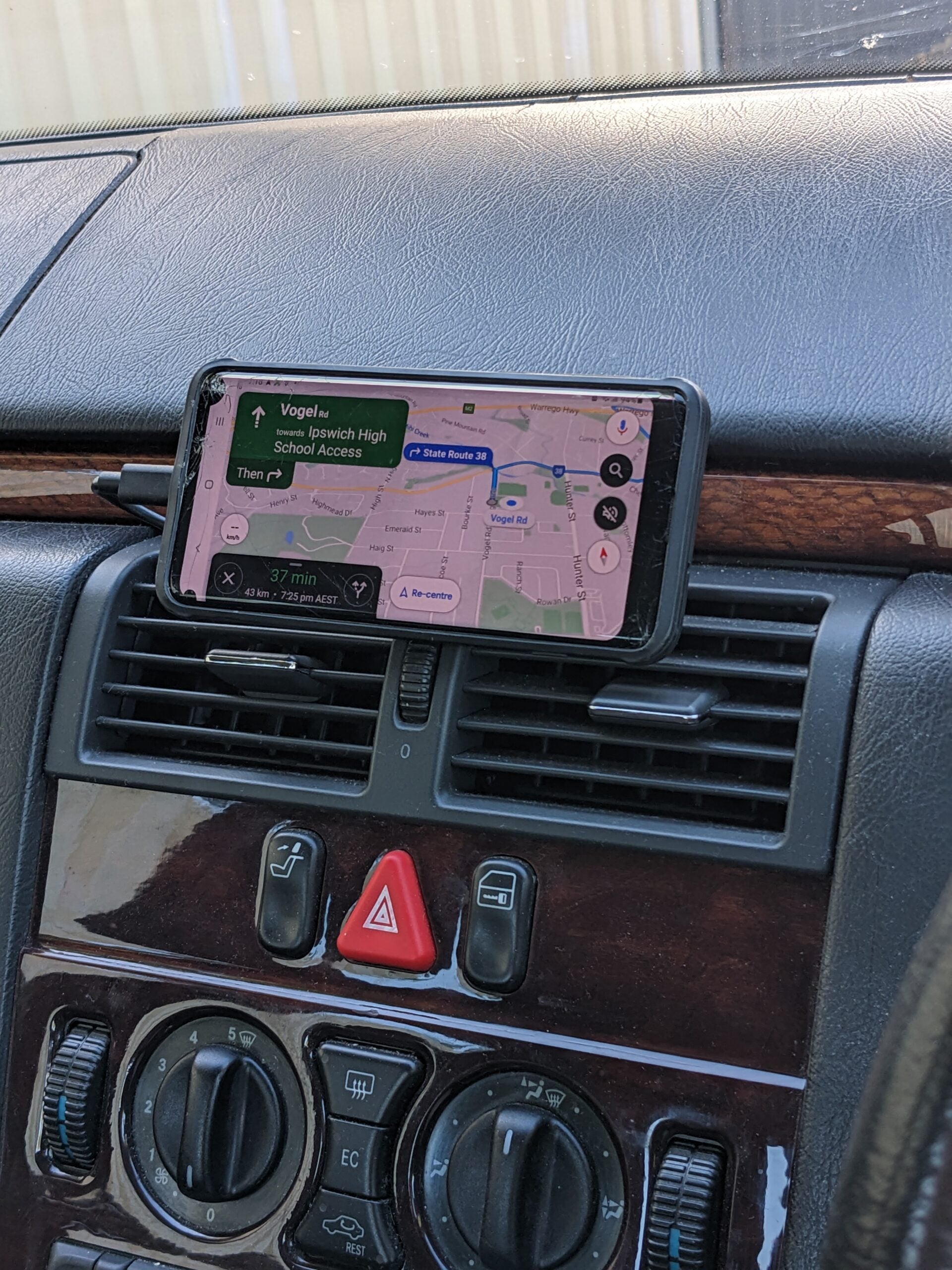I typically drive older cars because they’re affordable. However, they lack features like GPS navigation and the ability to play modern media. So, I took it upon myself to integrate a smartphone into my dash, figuring it would be a perfect solution to this problem. As it turns out, though, merely using a phone or tablet as a substitute infotainment screen doesn’t work as smoothly as you’d expect. No wonder why the practice hasn't caught on in the mainstream. I now know this from first-hand experience.
I’ve never been a fan of automotive infotainment systems. They’re typically slow, janky, and ugly to look at. As far as GPS navigation and media are concerned, the average smartphone is far more capable. They get regular software updates over the Internet, so they’re far more up-to-date than most car screens. They also have far more powerful processors, and better screens to boot.
Even in modern cars, I would always find myself using my smartphone over the inbuilt navigation. I’d normally just use the infotainment system as a Bluetooth stereo, controlling media and nav on my phone. I’d be willing to bet the majority of modern car owners do something similar, given the popularity of Android Auto and Apple CarPlay. But when I got my 1998 Mercedes E240, I decided I’d experiment with integrating a smartphone semi-permanently into the dash. I wanted a DIY infotainment solution that was fast, responsive, and looked clean. Sadly, my build was slow, sluggish, and a little messy.
Here's how it all went down.
The Design Phase
To mount the phone itself, I explored a variety of ideas. The leading candidate was a 3D-printed housing that would hide the phone under a retractable panel down near the shifter. However, other projects had me busy, and I wanted to do something fun, quick, and easy. This original plan would take significant development time I simply wasn’t willing to spend. Instead, I elected to trial my idea in a simpler way at first. I bought a magnetic smartphone mount and applied it to the top of the dash. I then placed a metal disc on the back of a Samsung Galaxy S10. This let me trial the phone in both portrait and landscape orientations. It still looked fairly low-key and put the screen in a good spot for easy visibility. There’s a reason why you see so many people driving around with these phone mounts.
I explored a selection of phones for this project, including a Google Pixel and an iPhone XS. I eventually landed on a Samsung Galaxy S10 with a minor screen issue. Overall, though, the issues I encountered were largely phone-agnostic. Lewin Day
I then needed a way to power the phone. I took a wireless phone charging pad with two USB outputs and fitted it in one of the cubbyholes in the dash. I hardwired it into the back of the cigarette lighter so it had a 12-volt supply when the ignition was on. I then hardwired a charging cable into the pad to supply the phone. I snaked it behind the radio and out through a subtle hole I drilled in the top of the dash. The hole was in a removable plastic panel, so I figured I could replace this panel if I wanted to revert what I’d done.
For the best functionality, the smartphone needed an Internet connection. Tethering it to my main phone would be too fussy every time I got in the car. Instead, I decided to pay for an extra SIM card that shared my main account’s data allowance. For something like $15 a month, the car smartphone would have its own, always-on 4G data connection. This would be ideal for accessing maps and music on the go.
The magnetic mount enabled the phone to be quickly installed, removed, and used in portrait and landscape orientations.
Thankfully, I had already hacked a Bluetooth audio input into the stereo system. All I had to do was hit the Bluetooth button and I could listen to tunes from the phone or get audio navigation alerts. I’d never do the latter, though, as they always bug the heck out of me when they interrupt the music.
Testing
I was glad I’d gone with an easy build. It allowed me to quickly trial the system and figure out what did and didn’t work.
What Worked
The basic setup came together quickly and worked as you’d expect. The phone sat nicely in the upper middle of the dash, and it was just within arm’s reach. Of course, Australian road rules mean touching it while in motion was out of the question, but it was a solid setup for entering addresses and music selections when stopped.
The USB charging setup ostensibly worked, too. With the USB-C cable snaked out of the dash and plugged into the phone, it didn’t look too bad overall. Funnily enough, I didn’t have any issues with glare or visibility either. The phone was more than bright enough to read and the sun didn’t cause me any issues with my chosen mount location.

Much to my surprise and disappointment, however, a lot of it didn’t work.
What Didn’t Work
The first headache I had was unlocking the phone. Once upon a time, it was straightforward to configure an Android phone to unlock in the presence of a certain Bluetooth device. This was intended specifically to allow a phone to remain unlocked in a car, for example. However, try as I might, I could not get this to work due to later security updates. These days, when the phone connects to the Bluetooth device, it still needs to be manually unlocked once with a fingerprint or PIN. Then it will (usually) remain unlocked for the rest of the drive.
This was still incredibly annoying. I had no interest in manually unlocking the phone every single time I got in the car. That’s an annoying hurdle that regular infotainment systems don’t have. It was possible I could get around this by using a different phone with facial recognition for unlocking. It would still be messy, though; ideally, I wanted the phone to just remain unlocked when the car was on. Heck, even when it was off! What do I care? I lock my doors! It’s possible there’s some weird Android hack to get around this. However, running dodgy hacks found online can compromise your phone if you’re not familiar with the finer points of the Android OS.
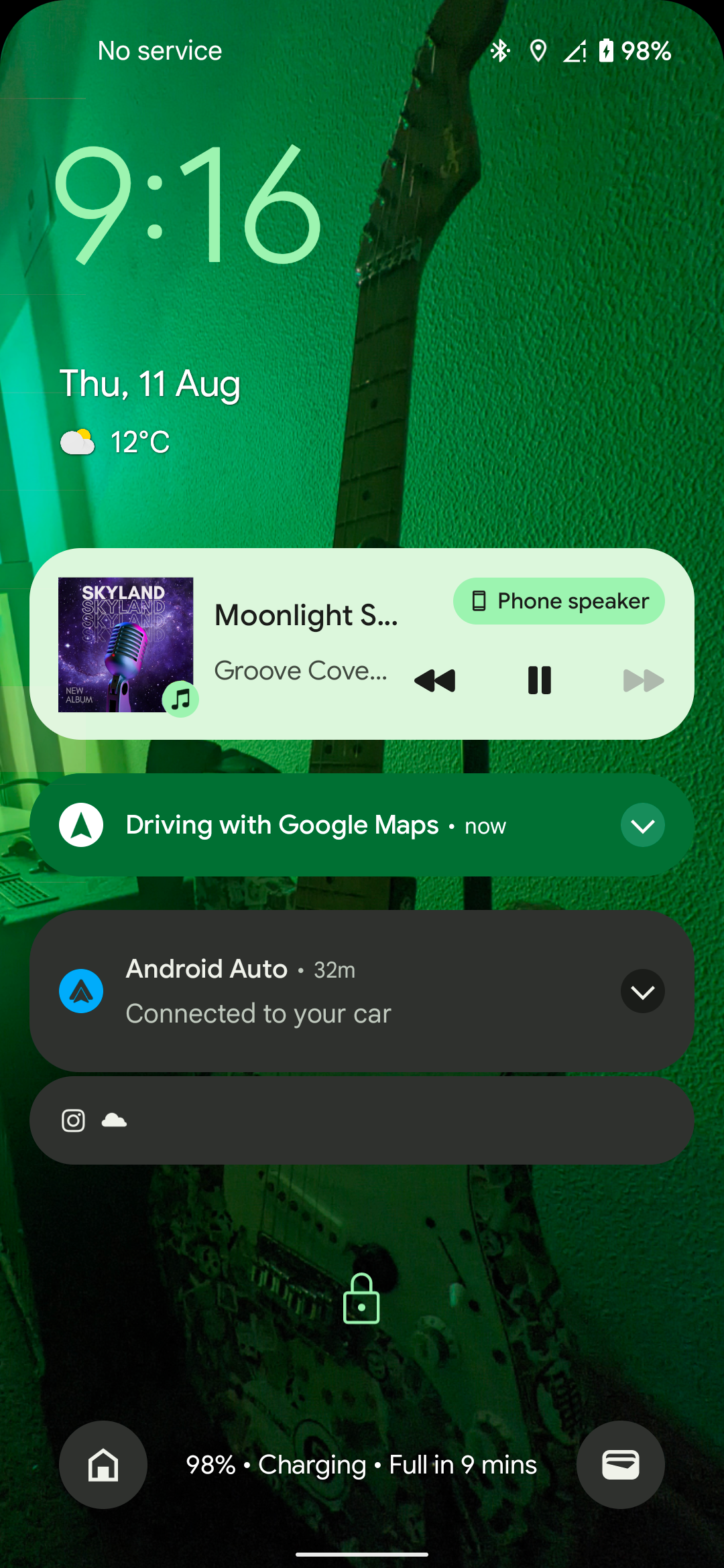
Voice control is really great when you’re driving. It lets you safely navigate, cue up songs, and even send simple messages without taking your attention off the road. Six years ago when I got my Google Nexus 5X, it worked great. I could even say, “Hey Googz” in my Australian accent and it would hear me every time. I got in the habit of scheduling meetings and reminders all by voice and fell in love with the feature.
When it doesn’t work, though, it sucks. The current era of Google Assistant is a big pain in my ass. Something changed in the last few years because now I can’t get it to work more than 30% of the time. Some examples of Google’s flaws in this area included accidentally texting an ex, “Got the crackers I got the crackers” when I was trying to message someone else entirely regarding a cheese platter. Thankfully, they didn’t respond.
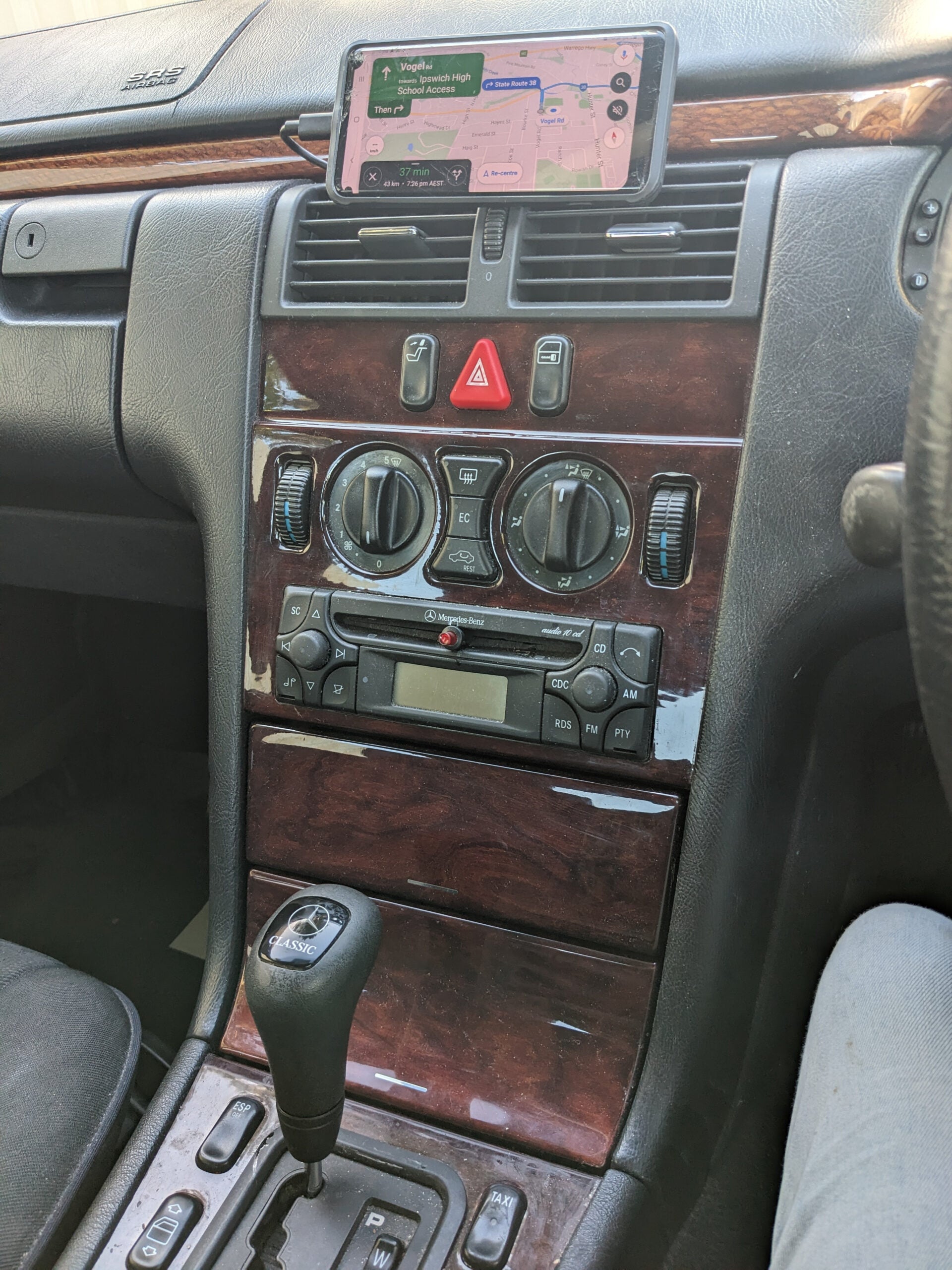
The phone’s software also wasn’t great for automotive use. I first tried using Android Auto for Phone Screens. This basically provided an Android Auto interface, but on the phone itself rather than on a paired infotainment screen. It was janky as hell and crashed a lot. It operated as an app sitting over the base Android OS but would often flick on and off and fight with the lock screen when I tried to do anything with it.
Google has since deprecated that software, introducing the Google Assistant driving mode instead. It was a little better, but it’s limited to portrait orientation only. It didn’t really help with any of the screen lock issues, anyway, so it was all a bit of a moot point. You can set it up to auto-launch driving mode when the phone connects to your car’s Bluetooth device, but I found this unreliable at best. Google has nerfed this software since as well—suggesting it’s not confident in this idea, either.
Battery life was also a surprising issue. I figured if I wasn’t using the smartphone, it would last pretty long on standby. However, if I didn’t drive for a couple of days, I’d often come back to find the phone dead flat. I’d then have to manually turn it back on after it charged for a while.
Overheating was perhaps the most surprising issue, though. In the mid-70s autumn temperatures, the greenhouse effect in my car was enough to overheat the phone. At best, I’d get in and it would be displaying a warning. I’d then have to wait for the aircon to cool the interior down enough for the phone to respond. At worst, it would just shut down entirely. Then I’d have to wait even longer for it to come back to life. I’d positioned the phone’s mount near an aircon vent. This was good to keep it cool. However, if the HVAC was set to warm, the phone would start slowing down due to the heat. I usually left the vent closed to avoid this problem.
Other Options
Other solutions do exist. If my car had a double-DIN slot for a radio, I’d simply buy an aftermarket stereo with wireless Android Auto or Apple CarPlay. Unfortunately, I’m stuck with a single-DIN slot. Even worse, it’s directly below the HVAC controls, so I can’t easily use one of those pop-out screen models.
If the stereo was installed above the HVAC controls, I'd get one of those pop-out screen models. However, in this setup, it would obscure the knobs. Lewin Day
I may experiment further down the line with hacked Android versions that aren’t so security conscious about the lock screen. However, I’d still face the other issues. The battery life problem is solvable if I’m willing to leave the phone charger running even with the ignition off. That would be fine as long as I have a strong battery and drive the car at least twice a week or so. The overheating issue feels pretty intractable, though. Autumn was bad enough, and Australian summers, particularly in the northern reaches, regularly exceed 110 degrees Fahrenheit.
Conclusions
Turns out, there are reasons why smartphones aren’t really designed to be automotive infotainment screens. There’s no simple way to have them automatically turn on with the ignition, nor turn off when the car is shut down. Cybersecurity concerns mean modern phones aren’t super chill about unlocking or staying unlocked, either.
There are ways around these issues. Most of them involve more heavy-duty hacking of the Android OS than I had time to pursue for the sake of this little experiment. Plus, this often comes with the caveat that one loses access to regular app and security updates. This then removes the benefit of regular online updates.
I’m not the first to tread this path, nor will I be the last. It’s also likely that others have found more success. Perhaps you have! I’d love to hear any information about what I’ve missed or what I did wrong. If there’s a way to make this work well, I’d be very keen to try it. In the meantime, I’ll just be using my regular smartphone on a removable mount to navigate and pump tunes as required. It’s not as neat or integrated, but it gets me by for now.
Got a tip? Let the author know: [email protected]

